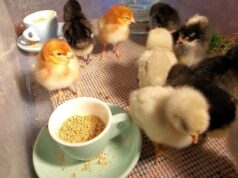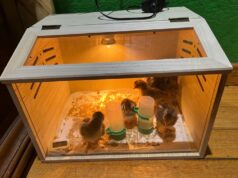Raising healthy chicks requires a nurturing environment, and one crucial aspect of this is maintaining proper brooder bedding. Understanding how often to change brooder bedding is essential for the well-being of your chicks. This article will guide you through the process, ensuring your chicks thrive in a clean and healthy environment.

What is Brooder Bedding?
Brooder bedding is the material used to line the floor of the brooder where chicks are kept. It provides insulation, absorbs moisture, and offers a comfortable surface for the chicks to walk on. Common materials include pine shavings, straw, and paper towels.
Importance of Changing Brooder Bedding
Changing the bedding regularly is crucial for maintaining a clean environment and preventing the spread of diseases. Accumulated droppings and moisture can lead to bacterial growth, causing infections and respiratory issues in chicks.
Factors Influencing Frequency of Changing Bedding
Number of Chicks
The more chicks you have, the more frequently you’ll need to change the bedding. High chick density leads to increased droppings and faster bedding saturation.
Type of Bedding Material
Different materials have varying absorbency levels. For instance, paper towels may need to be changed more frequently than pine shavings.
Brooder Size
A larger brooder allows for better air circulation and slower bedding saturation, while a smaller one may require more frequent changes.
Recommended Schedule for Changing Brooder Bedding
For optimal chick health, change the bedding every 2-3 days. However, it’s essential to monitor the bedding condition daily, especially if you notice strong odors or excessive moisture.
Steps to Change Brooder Bedding
Step 1: Gather Supplies
Before beginning, ensure you have all necessary supplies, such as fresh bedding, gloves, and a mask to protect against dust.
Step 2: Remove Old Bedding
Carefully remove soiled bedding, ensuring not to disturb the chicks too much. A dustpan or small shovel can be helpful.
Step 3: Clean the Brooder
Once the old bedding is removed, clean the brooder floor with a mild disinfectant. Allow it to dry completely before adding new bedding.
Step 4: Add Fresh Bedding
Spread a layer of fresh bedding evenly across the brooder floor. Ensure the thickness is suitable for insulation and comfort.
Choosing the Right Brooder Bedding
Pine Shavings
Pine shavings are a popular choice due to their absorbency and natural scent. They provide good insulation and are relatively inexpensive.
Straw
Straw is another option, offering a natural and cost-effective bedding material. However, it may not be as absorbent as pine shavings.
Paper Towels
For the first week, paper towels are advisable as they are easy to replace and allow chicks to gain traction.
Signs It’s Time to Change the Bedding
Keep an eye out for signs that indicate it’s time to change the bedding, such as a strong odor, dampness, or visible droppings.
Health Benefits of Regular Bedding Changes
Regular changes prevent the buildup of harmful bacteria and ammonia, reducing the risk of respiratory illnesses and promoting overall chick health.
Common Mistakes in Brooder Bedding Maintenance
Avoid overcrowding, neglecting regular checks, and using inappropriate bedding materials, as these can negatively impact chick health.
Conclusion
Maintaining clean brooder bedding is vital for ensuring the health and comfort of your chicks. By understanding how often to change brooder bedding and following the recommended steps, you can create a safe and nurturing environment.

FAQs
What is the best bedding material for chicks?
Pine shavings are widely recommended for their absorbency and natural scent, making them an excellent choice for chick bedding.
Can I use sand as brooder bedding?
While sand can be used, it may not provide sufficient insulation and can be challenging to clean.
How do I know when to change the bedding?
Look for signs such as strong odors, dampness, or visible droppings, which indicate it’s time for a change.
For more detailed information on chick care, visit PetMD’s Baby Chicks Care Sheet.
For additional resources on brooder setup, check out this portable chick brooder setup guide.
This article contains affiliate links. We may earn a commission at no extra cost to you.










